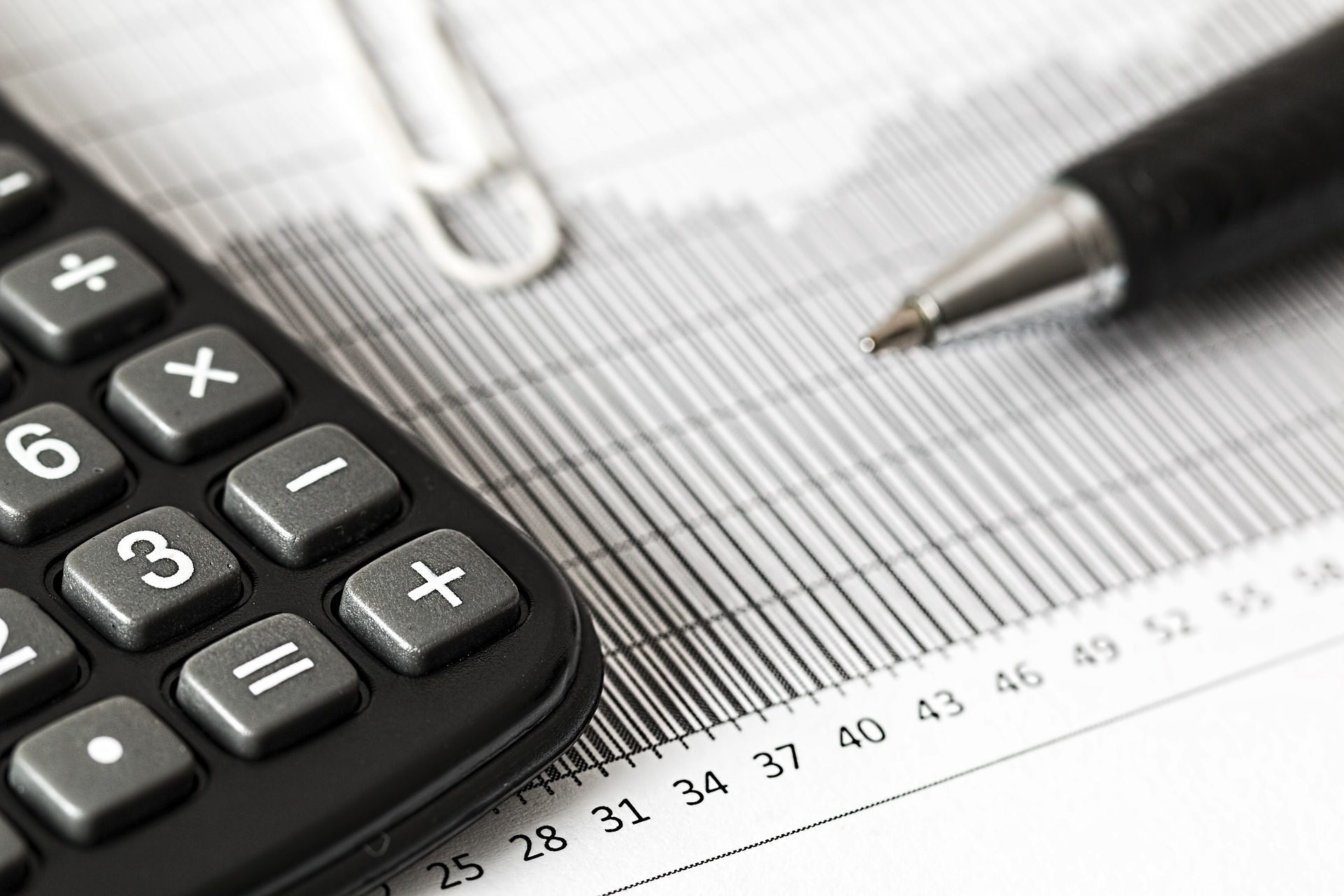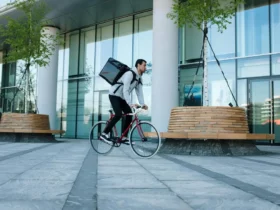Deciding between food delivery apps for the best earnings can be a real noodle-scratcher. I’ve been there, balancing the pros and cons of Uber Eats, DoorDash, and Grubhub. From my experience, each platform has its own flavor when it comes to pay.
Each app cooks up its payment schedule uniquely, with Grubhub and Uber Eats paying weekly, while DoorDash offers a Sunday night treat. Plus, Uber Eats gives you the chance to cash out up to five times daily, despite the small fee. It’s a buffet of options, and I’m here to help you plate up the best choice for your wallet.
Analyzing the Earnings: Uber Eats, DoorDash, and Grubhub
Current Trends in Food Delivery Services
In recent years, there’s been an undeniable surge in the demand for food delivery services. I’ve observed how platforms like Uber Eats, DoorDash, and Grubhub have adapted and changed, continuously vying to capture the largest slice of the market. This growth is part of a wider trend in the gig economy, where freelancers and side hustlers like me are looking for flexible earning opportunities. Yet, the financial viability for drivers heavily depends on the pay structure of these services. It seems Grubhub often leads in per-order earnings, which can mean more money in my pocket for each delivery. On the flip side, Uber Eats might offer less on average, but the advantage of cashing out multiple times a day can be a game-changer for someone needing quick access to their earnings.
The dynamic nature of this industry doesn’t just affect my earnings, it also shapes customer habits and expectations. More people are now accustomed to ordering in, whether it’s to save time or indulge in a wider variety of food options. As we navigate this evolving space, it’s crucial to keep an eye on the trends and changes that affect our bottom line as drivers.
Market Dominance and User Preferences
Speaking of bottom lines, market dominance plays a pivotal role. While Grubhub was touted as the king of market share a few years ago, competitors are not lagging far behind. This battle for the top spot is more than just bragging rights; it influences which app users and restaurants prefer. For smaller establishments or newer drivers like myself, DoorDash might seem more appealing due to its increasing market presence and its association with popular brands.
User preferences can also dictate where we, as drivers, might earn more. Some customers stick with one app out of loyalty or habit, while others might switch based on who offers the best deal at the moment. It’s essential for me to keep tabs on where the demand is and which service customers veer towards in my city. After all, higher user demand generally translates to more delivery opportunities and potentially better tips. The key is to remain adaptable, providing services where they’re most wanted and being savvy enough to operate across multiple platforms if that’s what it takes to maximize earnings.
Breakdown of Payment Models
Uber Eats’ Compensation Structure
Factors Influencing Earnings
Uber Eats adopts a payment formula that might appear simple at first glance. I receive base pay for each delivery I complete. Key factors like the distance I travel, the time it takes, and the location of the customer all come into play. The exact payout varies, often fluctuating with the market and time of day. Uber Eats aims to offer a fair and consistent earnings floor, ensuring I’m not left in the dark about how much I’ll earn from one delivery to the next.
Bonus and Surge Pricing Strategies
To keep things interesting and wallets full, Uber Eats incorporates bonuses and surge pricing. Surge pricing kicks in during high-demand times, effectively beefing up the base pay. While bonuses might be less predictable and depend on specific promotions, keeping an eye on the app for these offers is key to boosting my income.
Understanding DoorDash’s Pay System
Base Earnings and Variable Factors
DoorDash keeps its pay model dynamic. The base pay is just the beginning, and it factors in elements such as the complexity of the order, the distance, and the estimated time of completion. It might seem straightforward, but with variable aspects coming into play, some days feel like a guessing game when it comes to predicting my earnings.
Special Earnings: Peak Pay and Promotional Challenges
DoorDash spices up the game with Peak Pay and promotional challenges. Peak pay periods are prime time for me to earn extra on top of the regular rates. Challenges, on the other hand, are set out like little missions, where completing a certain number of deliveries within a timeframe can lead to additional cash in my pocket.
Grubhub’s Earning Potential
Calculating Pay with Grubhub
When I deliver with Grubhub, the pay structure is straightforward: there’s a base pay, and I keep 100% of my tips. The base pay takes into account the time I spend delivering and mileage. There’s also the Grubhub contribution, which ensures I earn a guaranteed rate in my local market, provided I meet certain criteria like the Acceptance Rate when driving during scheduled blocks.
Grubhub’s Unique Earning Additions
To top it all off, Grubhub throws in some unique earning additions like Missions. These are special offers that come my way for a chance to increase my payout, for instance, by joining sweepstakes or hitting certain driver goals within a designated period. It’s like adding a cherry on top of the earnings sundae.
The Role of Tips
When I’m delivering with app-based food delivery services, I’ve found that tips can make a substantial difference in my overall earnings. Whether it’s Uber Eats, DoorDash, or Grubhub, customer tips matter a lot. These platforms allow customers to tip either a flat dollar amount or a percentage of their order, which means that every delivery has the potential to significantly increase their pay. In fact, it’s not uncommon for tips to surpass the base pay for a single delivery.
My strategy includes providing the best service possible to encourage generous tipping. I’ll make sure to handle orders with care, communicate effectively with customers about any delays, and always be courteous and professional. Since tips can vary from customer to customer, I also pay close attention to any patterns and preferences, like customers who tip well or areas that are more generous.
Scheduling and Work Flexibility
Comparing the Scheduling Models of the Three Platforms
When juggling the demands of a gig economy job, being able to set my own schedule is crucial. DoorDash, Uber Eats, and Grubhub each offer unique scheduling models, and understanding the differences helps me plan my work more effectively. With DoorDash, I can claim shifts up to five days in advance. If I’ve got Early Access—granted I meet certain requirements like a 4.6 average rating and a 95% completion rate—I can grab my slots a day earlier; that’s six days ahead. Plus, the Dash Now feature lets me jump into the action when DoorDash signals a high demand for drivers.
On Uber Eats, the scheduling is a bit more relaxed; while they don’t have a scheduling system per se, the flexibility is great for diving in whenever I’ve got time. Meanwhile, Grubhub offers a more structured approach. I can schedule blocks of time in advance, and if I’m a Premier driver, I get the bonus of early access to these shifts. However, if I’ve got to drop a shift, I need to do it with at least 72-hours notice to avoid any restrictions on my account.
Flexibility vs. Stability: What Each Platform Offers
Choosing between flexibility and stability is a trade-off that I weigh based on my needs. If it’s about snagging a shift when the opportunity arises, Uber Eats lets me work with no set scheduling. It’s perfect for squeezing in deliveries between other commitments. But, if I prefer knowing exactly when I’ll be working and ensuring I have a steady stream of orders, DoorDash and Grubhub are more up my alley. Both platforms prioritize scheduled drivers for order allocation, which can be a significant advantage during peak hours.
DoorDash’s model is a happy medium for me. I can schedule ahead to secure busy mealtimes while still having the flexibility to catch any unscheduled hours, especially since the app shows me where demand is high with a highlighted red map. Grubhub prioritizes their scheduled drivers, too, handing me the reins to plan my week better and optimize my earnings. The choice really boils down to whether I want the predictability of scheduled shifts or the spontaneity of logging in at will.
Real Driver Experiences and Average Earnings
Comparing Hourly Earnings Across Platforms
I’ve spent quite some time looking into the financial side of being a delivery driver for the top food delivery services. It’s fascinating how much variance there is in earnings reports from individuals who drive for DoorDash, Uber Eats, and Grubhub. From my research, here’s what I found:
| Delivery Platform | Low Average Hourly Earnings | High Average Hourly Earnings |
|---|---|---|
| DoorDash | $15 | $25 |
| Uber Eats | $18 | Varies due to batching orders |
| Grubhub | $12* | $30.60* |
*These figures are before tips which can significantly affect take-home pay.
In California, where drivers have assured a precip hourly wage of more than $18 for their engaged time, the numbers might differ. One driver even mentioned a bonus adjustment of $10 from DoorDash, which seems like a good remedy for slower hours. What’s more, DoorDash and Grubhub both offer 100% tips to drivers, which isn’t always the case with other platforms.
However, while surveys and account records provide some insight, the true picture of earnings often materializes when I talk directly to those on the roads—drivers themselves.
Testimonials and Feedback from Drivers
No data can substitute the authenticity of drivers telling me about their day-to-day. A DoorDash driver I chatted with explained that although some days he might only make around $10 per hour, on other occasions—the good ones—he’s managed to earn upwards of $25 per hour, especially during peak meal times.
Conversations with Uber Eats couriers presented a mixed bag of emotions; thanks to order batching, it’s sometimes hard to discern what exactly they’re making per gig. A few shared they received adjustments from Uber but had concerns about transparency and consistency.
On the Grubhub side, I’ve heard from drivers that the guaranteed minimum earnings are a safety net they appreciate. Here’s an interesting point though: one driver pointed out that he rarely sees the need for such guarantees because of the frequent top-up from tips and his strategic scheduling during high-demand hours.
For every driver out there, a shared sentiment resonates—tips are the bread and butter. Earnings can notably increase when customers are generous. It’s why many drivers I’ve spoken with take customer service seriously, looking to impress every time they’re on a drop-off. But let’s not forget the other side: when tips are low, it’s a whole different ball game.
Geographic Influence on Earnings
Service Area Reach and Its Effect on Pay
When I’m looking at the different delivery platforms, I immediately notice that each has a unique footprint, affecting where I can drive and earn. DoorDash, Uber Eats, and Grubhub all have different market penetration across the U.S., and this can significantly alter potential earnings. Larger cities often mean more orders and, consequently, higher income potential. But it’s not just about the city size; it’s also about how saturated the market is with drivers.
In densely populated areas, these platforms typically have more users, translating to more delivery requests. This higher demand can mean consistent work for me. However, a larger driver pool also means more competition for these orders, which can sometimes make it hard to maintain a steady flow of income. On the flip side, working in a smaller market can mean less competition, but it might also signal a lower volume of orders which may affect how much I’m able to earn during my shifts.
How Location Influences Driver Earnings
My earnings can vary wildly depending on the city I’m in. Geographical location plays an essential role in the economics of food delivery. Factors like average income levels, living costs, and the general tipping culture of an area can all influence the tips I receive. Research shows that people in some cities tend to tip more generously than in others, and even within a single city, there can be neighborhoods that are more lucrative due to higher tipping rates.
Furthermore, the time of day and week can play a part in how much I end up earning. Peak mealtimes, like lunch and dinner, are high-traffic times and can lead to more delivery requests and potentially higher tips. Also, operating in an area with a high cost of living may translate to higher menu prices, and since tips are often a percentage of the total order value, this could result in larger tips.
I also have to consider the distance I’ll be traveling for each delivery. Some areas are more spread out, leading to longer delivery times and higher fuel costs, which can eat into my earnings. In contrast, urban areas with close proximity between restaurants and customers can help me complete more deliveries in a shorter amount of time, maximizing my earning potential.
In busy areas with lots of delivery requests, I might even benefit from incentive programs such as surge pricing or peak pay bonuses, which can make a significant difference to my hourly rate. But I keep in mind that while these incentives can boost my earnings, they’re not always guaranteed and often depend on the time and area I’m delivering in.
Evaluating the Pros and Cons for Drivers
As I delve deeper into the world of food delivery, I’m finding that each service has its unique set of advantages and drawbacks. It’s not just about how much one can earn but also the overall experience that comes with the role. I’ve had firsthand experiences with these platforms and have chatted with fellow drivers to build a comprehensive picture.
Advantages and Challenges of Uber Eats
Starting with Uber Eats, it’s refreshing that they have no zones and no schedules, offering a significant amount of freedom to drivers. This flexibility can be invaluable for someone like me looking to fit work around other commitments. Uber Eats also gives customers the option to increase their tip post-delivery, which can be a pleasant bonus. Their app is intuitive, showing delivery distance, time estimates, and the approximate final delivery address.
Uber Eats Pros:
- No zones
- No schedules
- Customers can increase tips post-delivery
- Transparent information about deliveries
Yet, there are hurdles. I’ve found signing up can be a bit of a maze, and the comfort of new driver orientations is absent. For those eyeing the Uber Eats app, it’s worth noting it’s identical to the Uber driver app, which might not suit everyone’s taste. Grouped orders present a challenge, often being less lucrative and more complicated.
Uber Eats Cons:
- Confusing sign-up process
- Lack of new driver orientation
- Grouped orders can be tricky
DoorDash: Benefits and Limitations
DoorDash has been a go-to for many due to its ease of use. The app is clean, and I particularly appreciate being able to check an order’s details before accepting it. Another plus is the way DoorDash times orders to cut down on restaurant wait times. They also offer introductory promotions and a referral bonus, which is quite a catch.
DoorDash Pros:
- User-friendly app
- Detailed order information
- No long waits for restaurant orders
That said, DoorDash isn’t without its flaws. Certain zones can become a pain to navigate, and the “Top Dasher” stats system can be more intimidating than motivating. I’ve noticed small orders are frequent, and without any mileage pay, they can quickly eat at profits. Cash-out fees are also something to keep in mind.
DoorDash Cons:
- Challenging zones
- “Top Dasher” stats may be intimidating
- Small orders with no mileage pay
Grubhub’s Strengths and Weaknesses
Turning to Grubhub, their commitment to their drivers stands out. They dispatch new orders to keep you moving and minimize downtime. This constant stream of work can be a huge benefit when it’s busy. Plus, the potential for larger catering orders adds an interesting dimension to your earnings.
Grubhub Pros:
- Continuous order flow
- Opportunity for larger catering orders
Grubhub isn’t without nuances in its operation. The interface could use some improvements, and getting to cater to those high-paying catering orders requires not only a significant quantity of deliveries but also maintaining good stats.
Grubhub Cons:
- Interface is less user-friendly
- Access to high-paying catering orders is limited
Taking a balanced look at these services, I’m discovering that the right choice is a personal one. It’s about aligning the pros and cons with one’s expectations and work preferences.
Final Assessment
Deciding between Uber Eats, DoorDash, and Grubhub is no small feat. Each platform has its unique perks and pitfalls that can sway your decision. I’ve found that while Uber Eats shines with its transparent policies, DoorDash wins on user experience, and Grubhub offers a steady order stream. Ultimately it’s about what fits your needs and work style best. Weighing the pros and cons against your personal goals will help you land on the right platform. Happy delivering!
FAQ – Frequently Asked Questions
Can drivers work for multiple platforms simultaneously?
Yes, many drivers choose to work with multiple platforms (a practice known as “multi-apping”) to maximize their earnings and take advantage of the best offers available at any given time.
Are there any specific factors that can affect earnings on these platforms?
Yes, factors like the time of day (peak meal times), location (urban vs. rural areas), incentives, and the individual driver’s strategy (like accepting certain types of orders) can greatly influence earnings.













